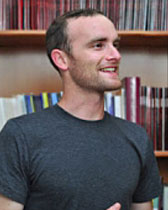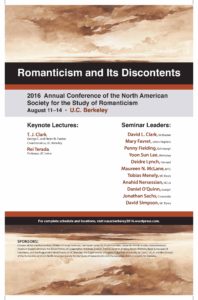Talking with Texts: Hazlitt’s Ephemeral Style
by Tristram Wolff
The essay begins …
Since social life, like art, is a problem of appeal, the poetic metaphor would give us invaluable hints for describing modes of practical action which are too often measured by simple tests of utility and too seldom with reference to the communicative, sympathetic, propitiatory factors that are clearly present in the procedures of formal art and must be as truly present in those informal arts of living we do not happen to call arts. . . . Is not the relation between individual and group greatly illuminated by reference to the corresponding relation between writer and audience?
—Kenneth Burke, Permanence and Change
Introduction: Mouthiness
When he wrote this passage, in 1935, Kenneth Burke was—as ever—looking for ways to persuade readers not only to observe written texts themselves as forms of social action but also to observe social action through what he called “the poetic metaphor.” According to this view, social life is a kind of “composition”: it is guided by questions of address (the “problem of appeal”); its “assertions,” as he puts it, must be “socialized by revision.” Though generally overlooked, the “communicative, sympathetic, propitiatory factors” foregrounded in art similarly bear the weight of social interaction (such “factors” belong, in the context of this special issue, to the indexical threadwork that allows “participation frameworks” to hang together). In the epigraph’s final line, Burke suggests that cultural-historical relations of a literary kind, as between “writer” and “audience,” revealing lines of separation imaginable between individual and group in a given social formation. Better remembered for arguing that literary forms bespeak and contest broader cultural convictions, here we are reminded that Burke also advocated thinking about social relations themselves through categories of verbal art.
In the work of British romantic essayist and political radical William Hazlitt (1778–1830), vivid accounts of the sociable worlds of everyday speech in early nineteenth-century London—in the tavern, parlor, pulpit, theater, or Parliament—are often likewise enmeshed in questions of literary form, in a comparable if unsystematic fusion of literary and social criticism. Burke’s comments (and the ethnopoetic and metapragmatic fields of research that Burke indirectly influenced) retrospectively help clarify that what enables Hazlitt so readily to assume continuities between literary writing and sociable ways of speaking is a version of the belief that language, whether literary or not, is active in and constitutive of the worlds around it. Moreover, the inseparability for Hazlitt of politics and style points to his intuitive grasp of the latter—in any of the discursive genres he analyzes, including his own writing—as practical activity.
In this he seems to have had an early sense of how, as V. N. Voloshinov emphatically put it, “poetic work is a powerful condenser of unarticulated social evaluations,” and reciprocally the way that “these social evaluations . . . organize form.” If the Marxist-inflected idea of language as practical activity elaborated by the likes of Burke and the Bakhtin circle aided later influential theoreticians of sociolinguistic practice like Erving Goffman, Dell Hymes, and Michael Silverstein in bridging analytic domains by offering theories of social discourse imagined through categories borrowed from verbal art (for example, performance roles, genres, meter), the point of departure for this article is to open backward onto a longer history of thought that presumes the mutual involvement of linguistic styles and social fractions. For this account, the prehistory of a literary sociology like Burke’s materializes in an earlier view of language as constitutive social activity. Though their narratives conflict in some respects, critics seem to agree that, for various reasons, views of language as historical, “public,” and active take recognizable shape in the literary era we now call romantic; indeed, one head of the difficult hydra called “European romanticism” was a rapid shift in available theories of linguistic change and interaction. Under romanticism’s monstrous shadow, then, this article zeroes in on William Hazlitt as one idiosyncratic precursor for language-in-use. Continue reading …
This article considers how the essayistic style of William Hazlitt’s printed texts produces, in its form, a critique of what it considers conservatism in speech and its uncritical reception. Situating Hazlitt in a longer history of thought that considers language a form of practical activity, I argue that the conversational character of Hazlitt’s writing is calculated not to resemble speech, but rather to take aim at speech’s false spontaneity.
 TRISTRAM WOLFF teaches in the Comparative Literary Studies Program at Northwestern University. He was a cowinner of the ACLA’s 2015 Bernheimer Award for best dissertation in the field of comparative literature. He is currently completing a book on the poetics and politics of the linguistic root, titled Frail Bonds: Romantic Etymology and Language Ecology.
TRISTRAM WOLFF teaches in the Comparative Literary Studies Program at Northwestern University. He was a cowinner of the ACLA’s 2015 Bernheimer Award for best dissertation in the field of comparative literature. He is currently completing a book on the poetics and politics of the linguistic root, titled Frail Bonds: Romantic Etymology and Language Ecology.

 On Friday, August 12,
On Friday, August 12,